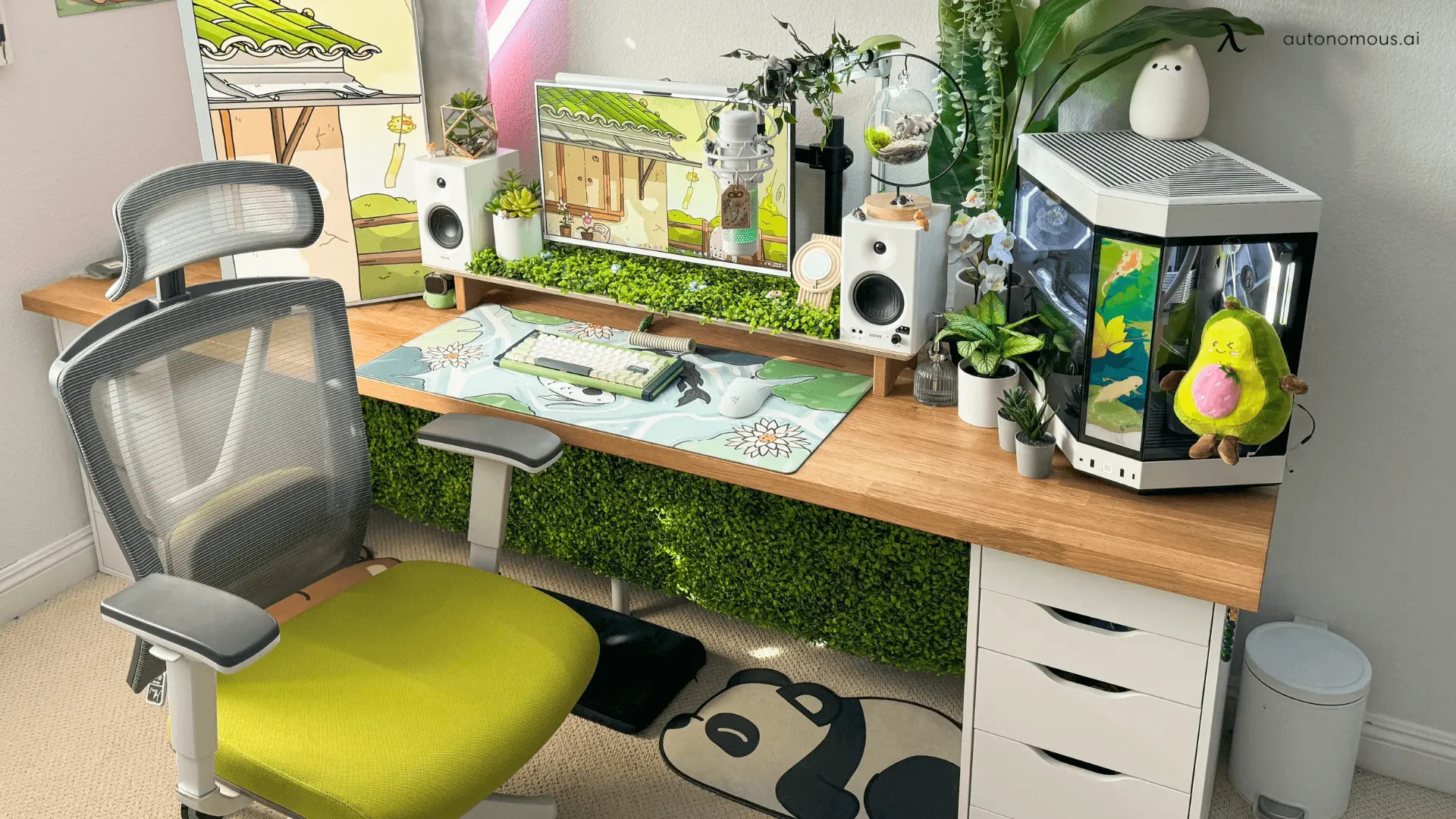
Standing Desk Leg Covers: Improve Style, Functionality, and Stability
Table of Contents
Standing desk leg covers offer a host of benefits that make them a smart addition to any sit-stand desk setup. Firstly, they protect the legs of the desk from everyday wear and tear, such as scratches, dust, and even dents. This is particularly useful if you’re frequently raising and lowering your desk, as the movement can expose the legs to potential damage.
Leg covers also contribute to a clean and organized workspace by concealing cables, wires, and the mechanics of adjustable desks. For those who are particular about aesthetics, aesthetic standing desk leg covers can match or enhance the overall decor. Additionally, leg covers can prevent wobbling by adding an extra layer of support, which is essential for maintaining stability, especially in larger setups or if you use a tall standing desk.
1. How to Hide Standing Desk Legs
Hiding the legs of your standing desk can give your workspace a cleaner, more polished look. Here are some effective ways to hide standing desk legs:
- Use Slip-On Covers: These are available in various colors and materials, and they easily slip over the desk legs to provide full coverage. Choose slip-on covers that align with your desk’s color scheme for a seamless look.
- Adhesive Vinyl Wraps: For a DIY approach, vinyl wraps allow you to customize the look of your desk legs. They come in different finishes, such as wood grain or metallic, making it easy to match your desk’s aesthetic.
- Enclose Legs with Decorative Panels: For a more substantial solution, you can create or buy panels that surround the desk legs, hiding them entirely. This approach is great for larger desks or those with multiple legs.
- Utilize Cable Management Covers: If your primary concern is hiding cables, cable management leg covers can route and conceal wires along the legs. This is especially useful if you’ve converted an existing desk to a standing desk and have visible wiring. For more ideas on desk conversion, explore how to convert an existing desk to standing.
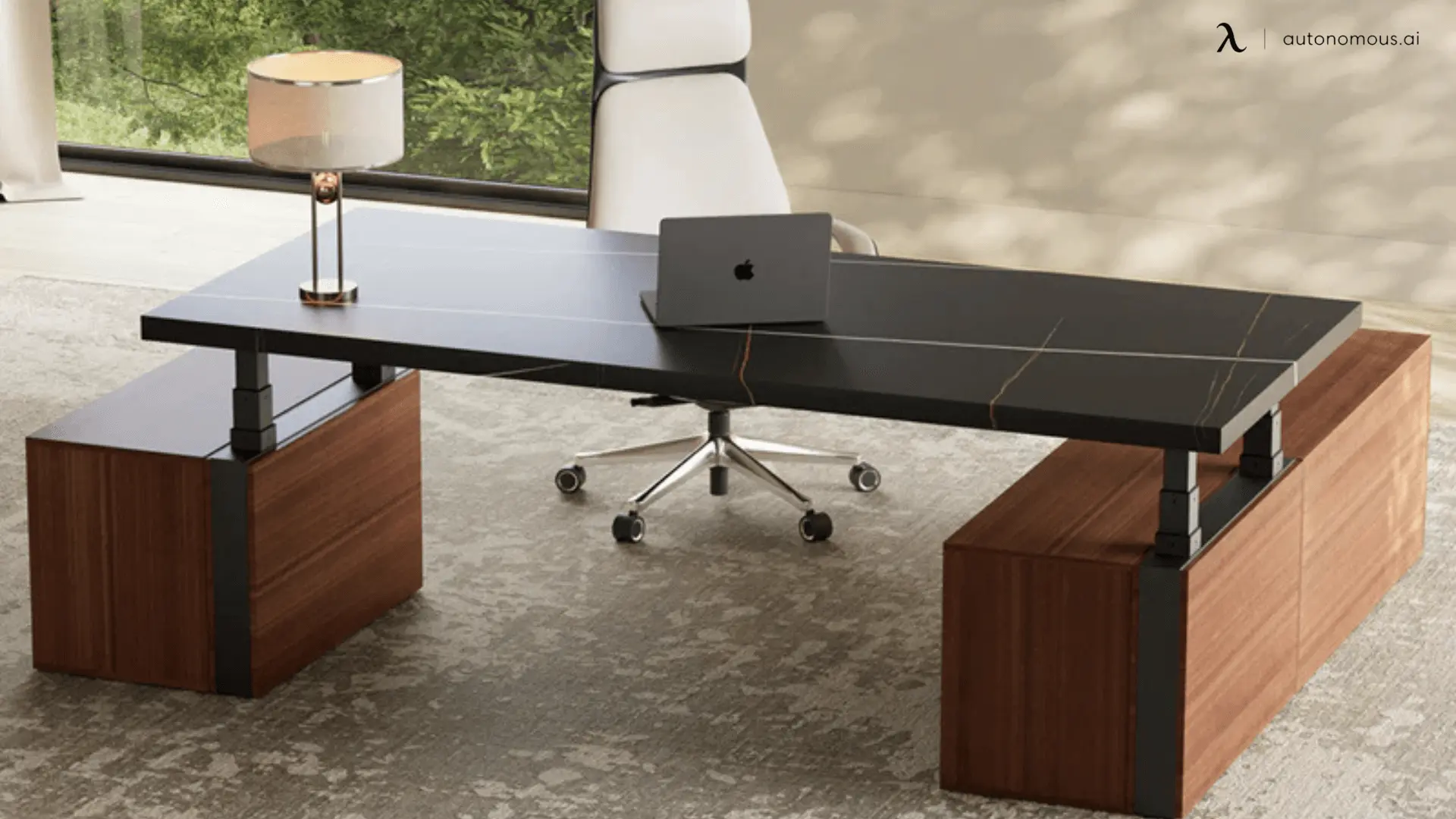
2. Best Standing Desk Base Covers for Different Desk Types
Choosing a leg cover depends on the frame type of your standing desk. Here are some tailored recommendations:
| Standing Desk Type | Recommended Leg Cover Features |
|---|---|
| C Frame Standing Desks | Provides partial to full coverage while maintaining flexibility and stability. Ideal for modern workspaces that require mobility. |
| T Frame Standing Desks | Sturdy covers with non-slip materials or padding to enhance support and reduce shifting. Best for professional environments where durability is key. |
| 4-Leg Standing Desks | Individual leg covers for each leg, ensuring maximum stability and even weight distribution, especially in high-traffic areas. |
| Dual Motor Standing Desks | Custom-fit covers that protect motorized components without obstructing functionality, ensuring smooth height adjustments. |
| Single Leg Standing Desks | Streamlined covers designed to conceal hardware without adding bulk, maintaining a clean and minimalist aesthetic. |
Selecting the right leg cover enhances both functionality and aesthetics. C-frame vs. T-frame desks require covers that support stability while maintaining flexibility. For four-leg standing desks, individual covers provide even weight distribution and reinforcement.
3. DIY and Aesthetic Standing Desk Leg Cover Ideas
Creating a leg cover for your standing desk is an excellent opportunity to blend functionality with personal style. Whether you're aiming to hide standing desk legs for a cleaner look or to add an artistic touch to your workspace, there are numerous DIY and aesthetic options to consider:
3.1. Vinyl Wraps
Vinyl wraps are a simple yet effective way to transform the appearance of your desk legs. Available in various finishes like wood grain, marble, metallic, or custom prints, vinyl wraps can be easily applied to the legs, giving them a sleek and professional look. This method is budget-friendly and allows you to match the leg covers with your desk or office decor seamlessly.
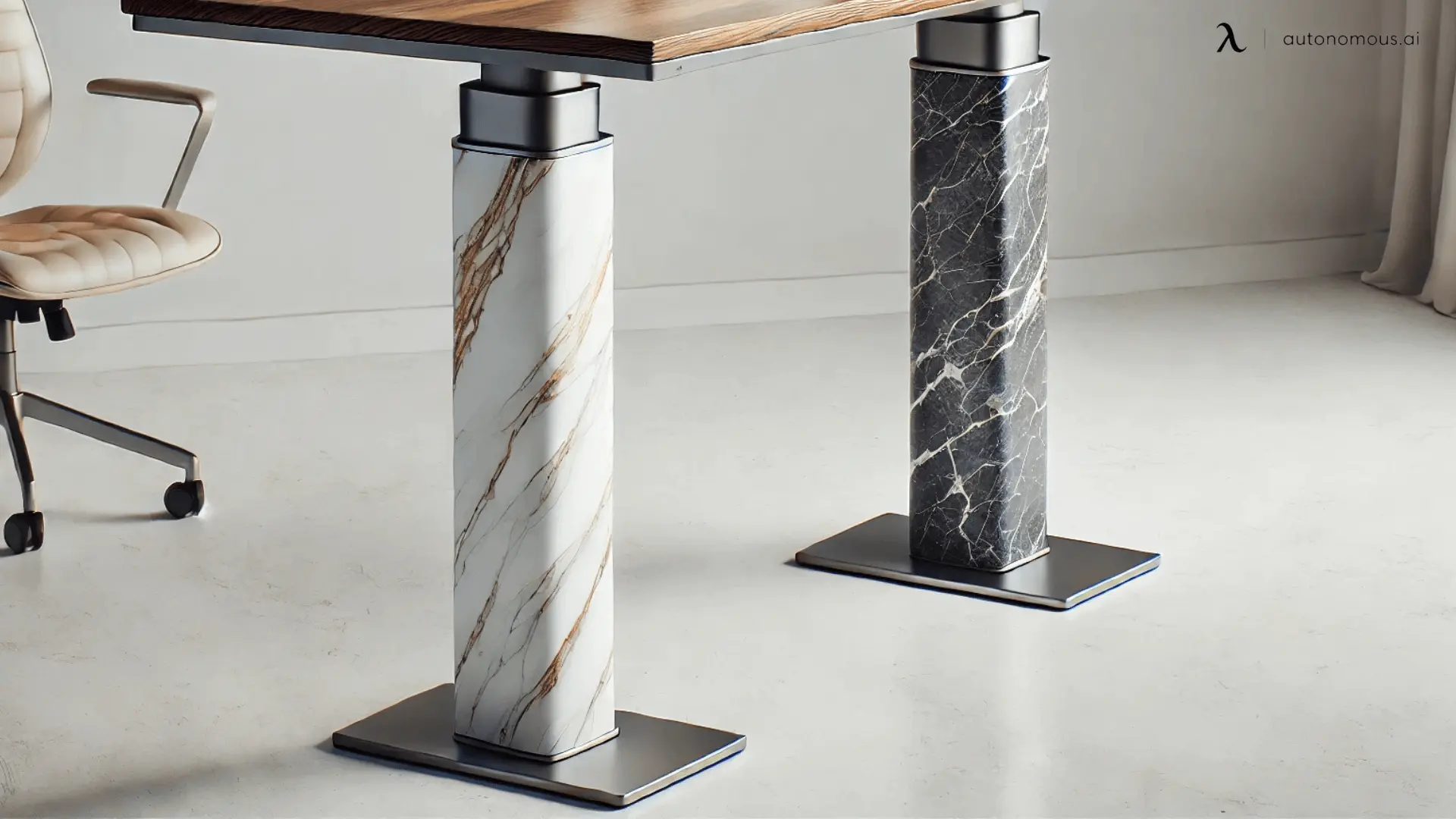
3.2. PVC Pipe Covers
For an industrial aesthetic, PVC pipes offer a durable and customizable option. Cut the pipes to the length of your desk legs and paint or wrap them with decorative materials. PVC covers are sturdy and can be personalized with various colors or patterns. This method provides a unique look and added protection for the legs.
3.3. Fabric Slipcovers
For a softer aesthetic, consider crafting fabric slipcovers. Choose fabrics that complement your workspace—solid colors for a minimalist look or patterns for a more vibrant feel. Slipcovers can be sewn or glued into sleeves that slide over the desk legs. Using stretchable fabric ensures a snug fit and makes it easy to remove and wash them when needed. This option adds texture and warmth to your office environment.
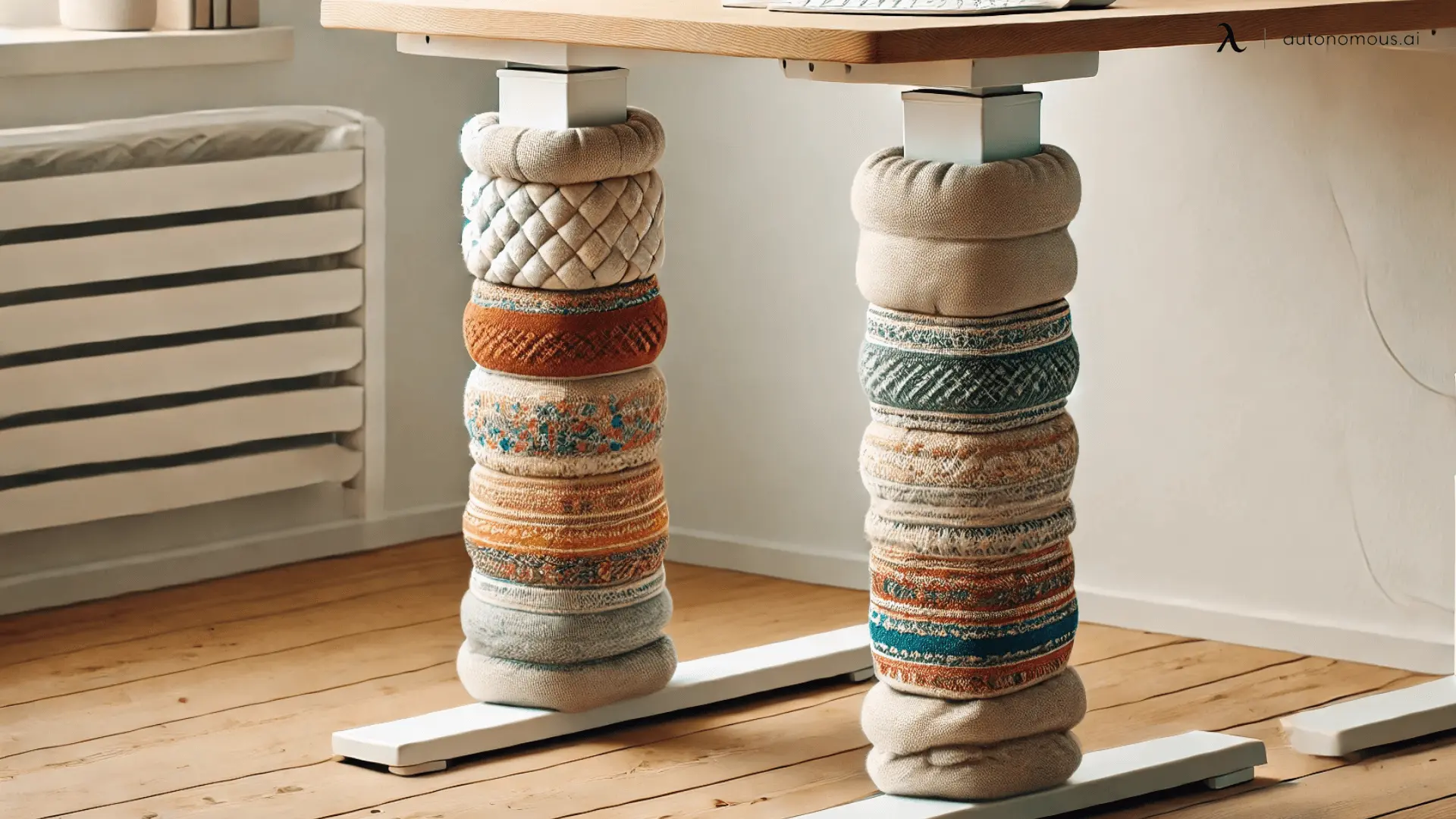
3.4. Decorative Panels
Attach decorative panels or screens to the sides of your desk to hide the legs entirely. Materials like perforated metal, acrylic sheets, or lattice work can add an artistic element to your workspace. This option is ideal for those who want to make a bold statement and can be particularly effective in larger office setups. They work well for preserving the sleek lines of a standing desk with drawer or an ultra-modern setup.
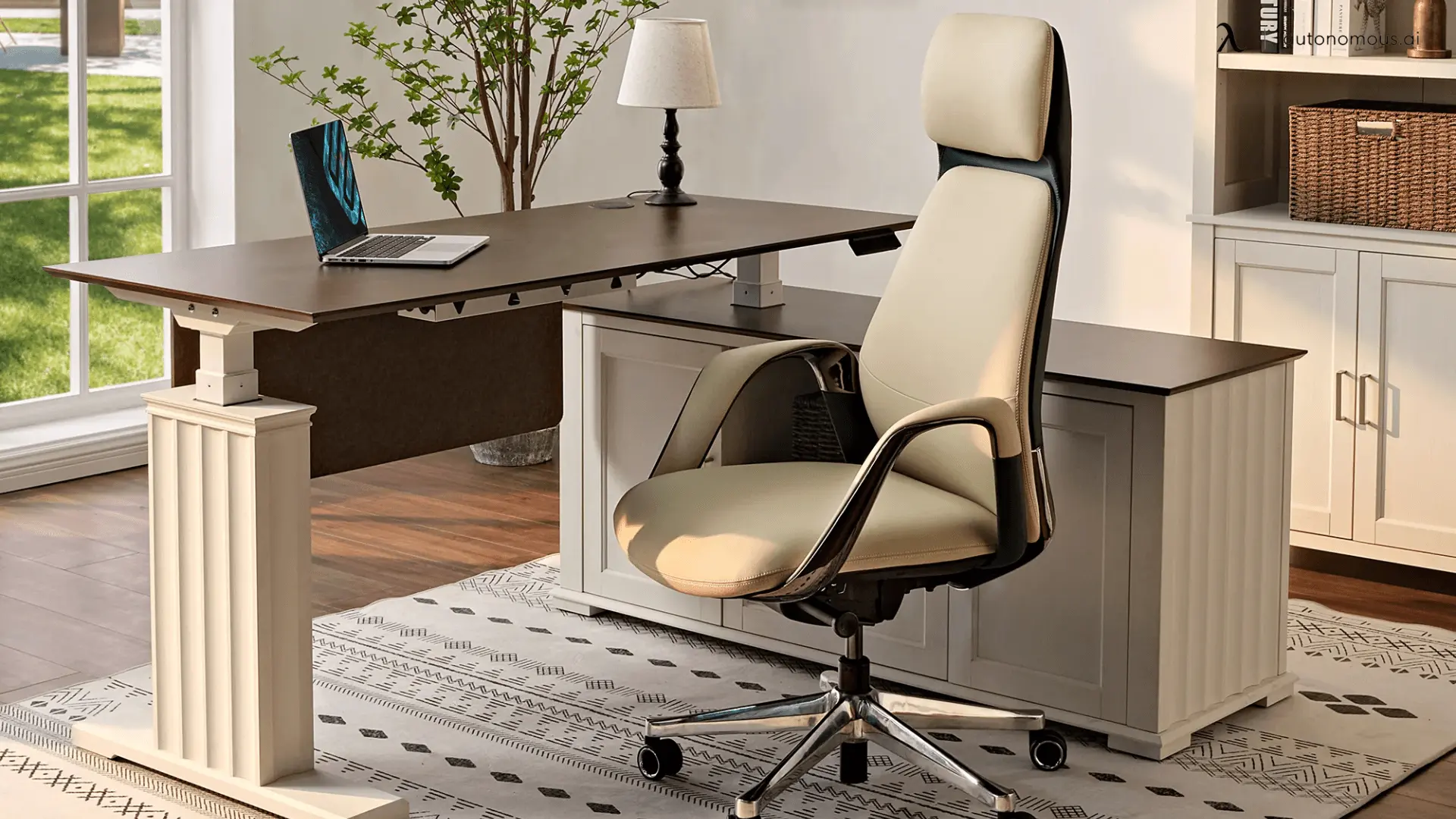
3.5. Wooden Enclosures
If you prefer a natural or rustic vibe, wooden enclosures might be your go-to solution. Use wood planks or panels, sanded and stained to match your desk or other furniture pieces. Wooden covers not only conceal the legs but also enhance stability. This approach works exceptionally well if you're handy with woodworking tools and can customize the design to include features like built-in cable management channels. These work well with desks that have wooden finishes or paired with decor inspired by engineer desk decor.
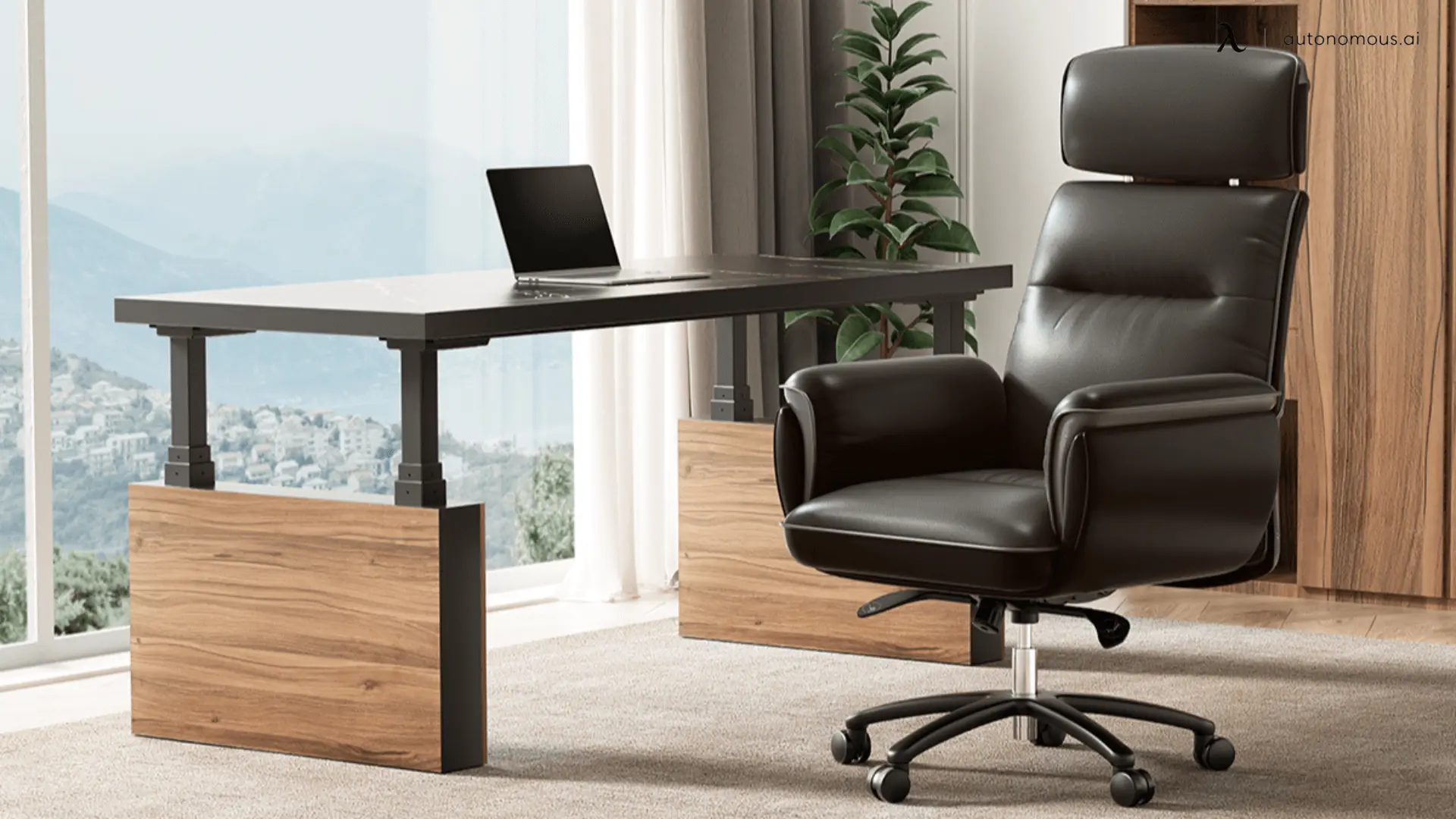
3.6. Recycled Materials
Embrace sustainability by repurposing recycled materials. Cardboard tubes, reclaimed wood, or fabric scraps can be transformed into creative leg covers. This eco-friendly approach not only reduces waste but also allows you to design unique pieces that reflect your personal style.
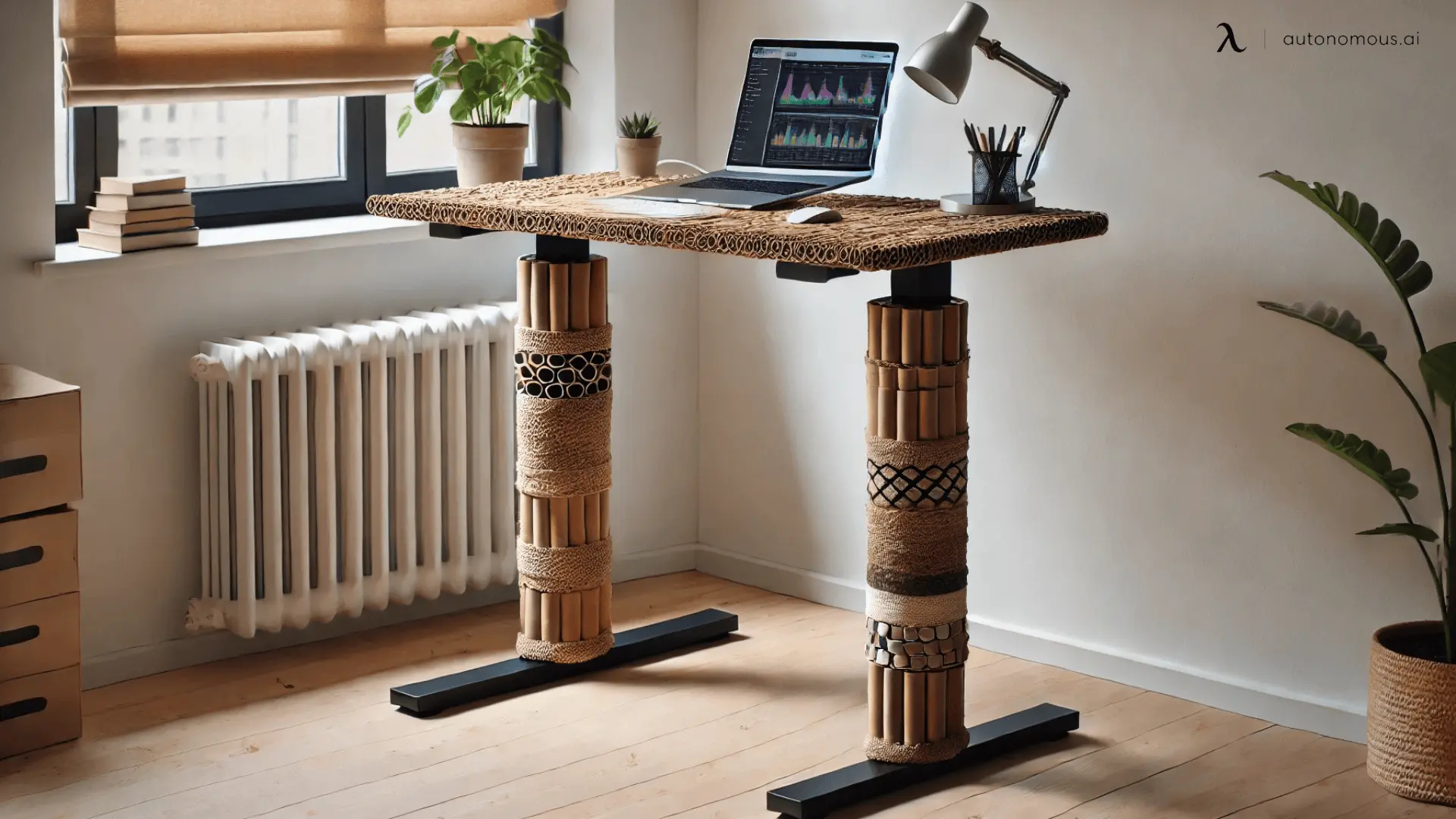
3.7. Custom Paint Jobs
If you're satisfied with the shape of your desk legs but want to enhance their appearance, a custom paint job might be the answer. Use stencils, geometric patterns, or freehand designs to turn your desk legs into artwork. This method maintains the original functionality while adding a personal touch.
Tips for a Successful DIY Project
- Measure Accurately: Ensure you have the correct dimensions of your desk legs before starting. Precise measurements are crucial for a snug and professional-looking fit.
- Select Appropriate Materials: Choose materials that are durable and suitable for your workspace environment. For example, if your office is prone to humidity, opt for materials resistant to moisture.
- Incorporate Cable Management: While designing your leg covers, consider adding features to hide cables and wires. This not only improves aesthetics but also enhances safety by reducing clutter.
- Maintain Functionality: Ensure that your leg covers do not interfere with the desk's adjustability.
- Safety First: Always use appropriate tools and safety equipment when undertaking DIY projects. Follow manufacturer guidelines for any materials or adhesives used.
4. FAQs
Can leg covers be used with motorized standing desks?
Yes, but make sure the covers don’t interfere with the motors. Specialized covers for electric standing desk frame are ideal for these setups.
Are leg covers suitable for corner desks?
Absolutely. Many covers are adjustable and can be fitted on corner standing desks, especially if they are custom-made or flexible in size.
Do leg covers add stability to standing desks?
Yes, some leg covers include padding or grip-enhancing materials that can improve stability, particularly beneficial for rolling standing desks.
How do I maintain leg covers?
Most covers can be wiped clean with a damp cloth, while fabric covers may need occasional washing depending on the material.
Conclusion
Adding a leg cover to your standing desk enhances both style and functionality, making your workspace more organized and visually appealing. Whether you opt for a DIY solution or a ready-made cover, these accessories help protect desk legs, hide cables, and boost stability, especially for those using a small standing desk or a standing desk converter. Beyond leg covers, consider complementary items like a standing desk mat for comfort or explore standing desk alternatives to further optimize your setup.
Stay connected with us!
Subscribe to our weekly updates to stay in the loop about our latest innovations and community news!
Interested in a Link Placement?
Spread the word
.svg)
.svg)



/https://storage.googleapis.com/s3-autonomous-upgrade-3/production/ecm/230914/bulk-order-sep-2023-720x1200-CTA-min.jpg)

/https://storage.googleapis.com/s3-autonomous-upgrade-3/production/ecm/230824/image_qIN1zTxi_1692157652807_raw-c3a7f648-6021-42f1-a20f-0874805faad0.jpg)